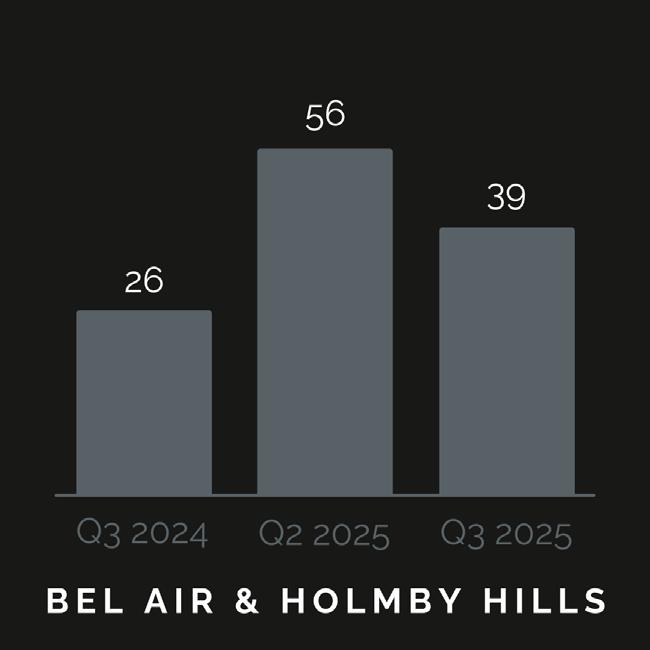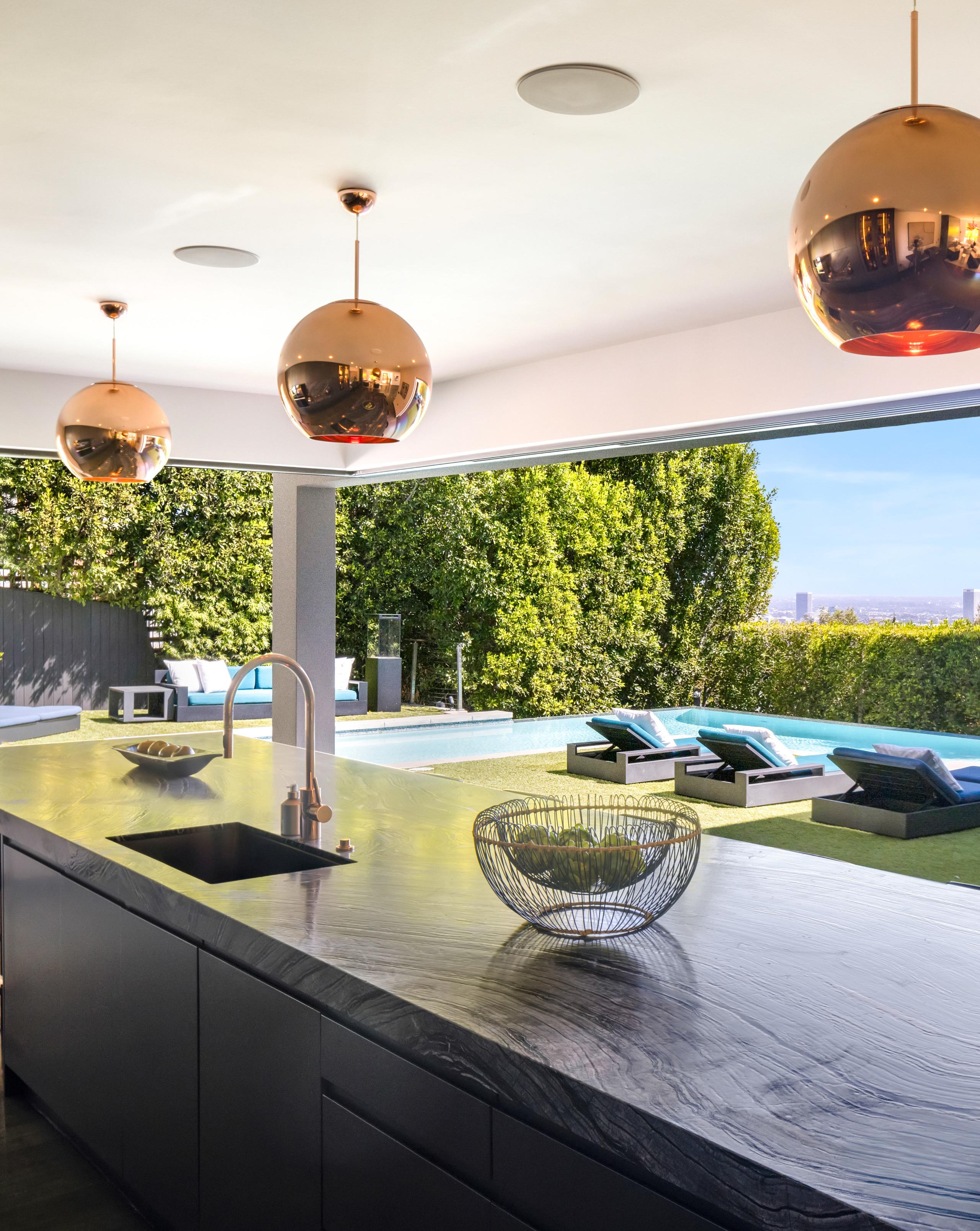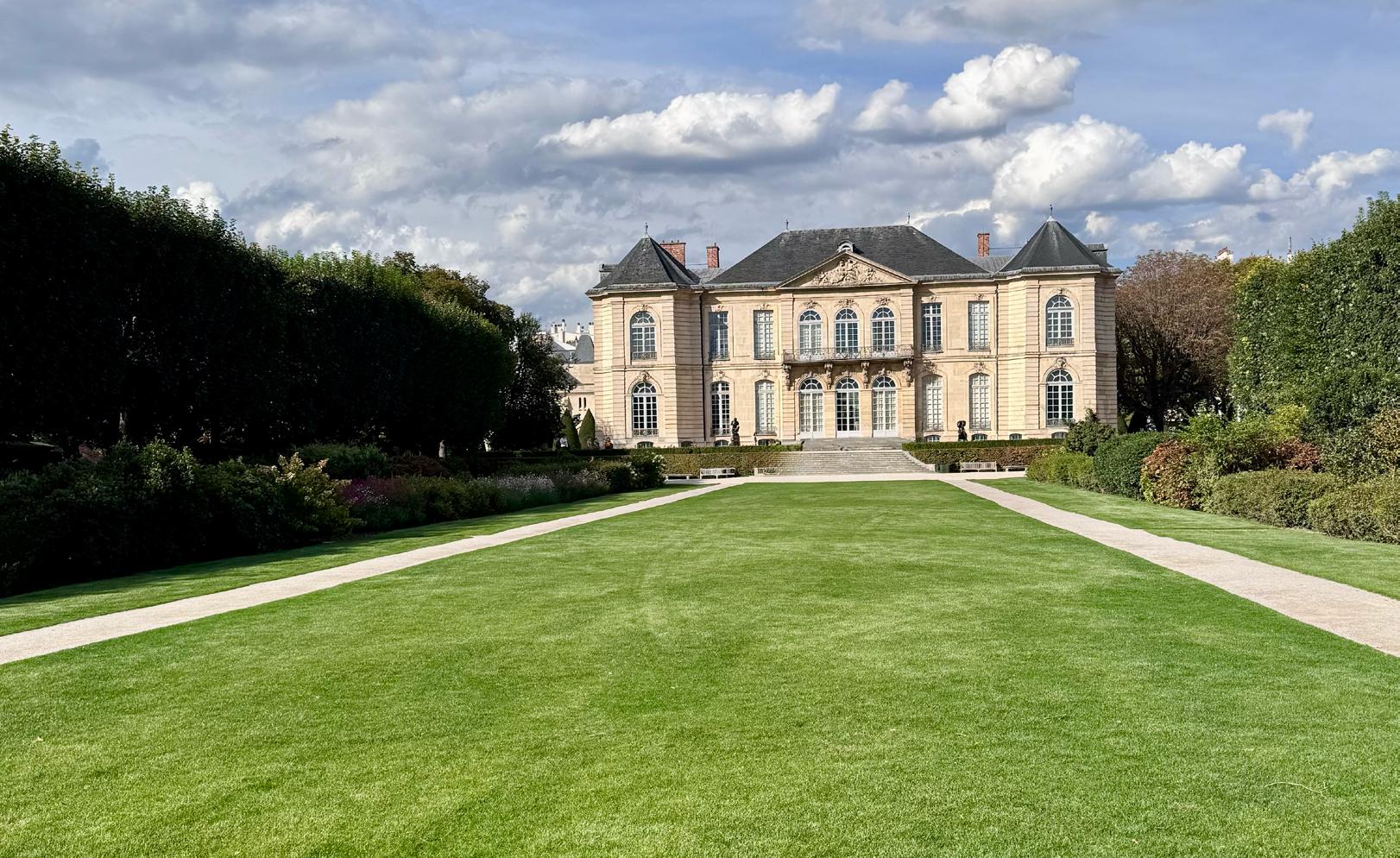PERS PECT IV ES
Q3 / FALL 2025




Q3 / FALL 2025



LOS ANGELES MACRO
EAST SIDE MICRO
WEST SIDE MICRO
SAN GABRIEL VALLEY MACRO
PASADENA
SOUTH PASADENA
LA CANADA FLINTRIDGE
SAN MARINO
ALTADENA
ARCADIA
SAN FERNANDO VALLEY MACRO
STUDIO CITY
SHERMAN OAKS
BURBANK
ENCINO
Renowned for its cultural diversity, iconic landmarks, and vibrant entertainment industry, Los Angeles encompasses a vast and varied landscape that includes sprawling urban centers, picturesque beaches, and rugged mountains. The city of Los Angeles serves as a global hub for entertainment, technology, and innovation. From the glamour of Hollywood to the laid-back vibes of beach communities like Santa Monica and Malibu, Los Angeles offers a rich tapestry of experiences, attractions, and opportunities for residents and visitors alike.
WEST SIDE MICRO AREAS PALISADES
BEVERLY HILLS
BEVERLY HILLS POST OFFICE
BEL AIR & HOLMBY HILLS SUNSET STRIP
EAST SIDE MICRO AREAS HANCOCK
HOUSES SPENT A MEDIAN OF 89 DAYS ON MARKET FROM LIST TO CLOSE.
1138
1138 NEW PROPERTIES WERE BROUGHT TO MARKET IN QUARTER 3.

HOUSES SPENT A MEDIAN OF 66 DAYS ON MARKET FROM LIST TO CLOSE.
838
838 NEW PROPERTIES WERE BROUGHT TO MARKET IN QUARTER 3.
TOTAL WEST SIDE LOS ANGELES SALES BY AREA
The data below illustrates nine micro markets surveyed in the Los Angeles area for Q3, the previous quarter, and the previous year.






TOTAL TRANSACTIONS




The data below illustrates nine micro markets surveyed in the Los Angeles area for Q3, the previous quarter, and the previous year.




TOTAL TRANSACTIONS


As summer’s intensity fades and the light turns golden, Southern California’s planting season begins anew. Autumn here isn’t a time of dormancy—it’s a quiet invitation to root, renew, and reimagine the garden.
Photos By Caitlin Atkinson

As autumn settles across Southern California, the season quietly invites a return to the garden. The air cools, the light softens, and the soil—having rested through summer’s heat—becomes ready once again for renewal. This is the time to plant with purpose: to choose species that not only thrive in the region’s Mediterranean climate but celebrate its natural rhythm of dry summers and mild, restorative winters. Native plants, long adapted to the state’s terrain and unpredictable rainfall, offer
both resilience and beauty. California poppies unfurl like drops of gold in the afternoon sun, while manzanita—with its smooth red bark and delicate bell-shaped blossoms—adds sculptural structure to any landscape. Sage varieties like white, black, and Cleveland sage perfume the air and attract pollinators, and the low, silvery leaves of California fuchsia bring a soft contrast to more vivid blooms. Together, they create gardens that feel distinctly of place—modern yet ancient, wild yet intentional.
For those cultivating edible gardens, now is the moment to prepare cool-season beds. Leafy greens such as kale, spinach, and chard flourish in the milder temperatures, as do root vegetables like carrots, radishes, and beets. Herbs like parsley, cilantro, and chives can be sown now, ensuring a steady supply of freshness through winter. Raised beds or well-draining soil enriched with compost will support their growth, while drip irrigation helps conserve water—a crucial consideration as the region continues to adapt to shifting climate patterns.
Planting in harmony with the season and the environment isn’t just an act of sustainability, it’s an act of connection. Each native bloom and garden bed reflects a relationship between land and lifestyle, reminding us that in California, beauty and balance begin quite literally in the soil.values showed a slight decline in one recent quarterly snapshot.




Holcomb’s own garden is a golden-hued sanctuary of native California flora.

The San Gabriel Valley, nestled in eastern Los Angeles County, offers a luxurious blend of cultural richness, scenic beauty, and economic prosperity. With upscale communities like Pasadena and San Marino, boasting stately mansions and sprawling estates, the valley provides breathtaking views of the San Gabriel mountain range. Additionally, the region’s thriving economy, anchored by prestigious academic institutions like Caltech, ensures a high standard of living and abundant amenities for residents.
PASADENA
SOUTH PASADENA
SAN MARINO
HOUSES SPENT A MEDIAN OF 81 DAYS ON MARKET FROM LIST TO CLOSE.

1055
1055 NEW PROPERTIES WERE BROUGHT TO MARKET IN QUARTER 3.
5 .0
THE MEDIAN PRICE OF HOMES IMPROVED BY 5.0% YEAR-0VER-YEAR.


The data below illustrates six micro markets surveyed in the San Gabriel Valley for Q3, the previous quarter, and the previous year.






TOTAL TRANSACTIONS




In the golden glow of a projector’s flicker, horror becomes something grander, a study of beauty, fear, and obsession. These films embody that rare, glamorous kind of terror.
CURATED BY GREG HOLCOMB

Renowned for its upscale neighborhoods like Encino, Sherman Oaks, and Studio City, the San Fernando Valley offers an exclusive enclave of lavish estates, opulent mansions, and sprawling gated compounds. With panoramic views of the surrounding mountains and easy access to premier shopping, dining, and entertainment destinations, the valley epitomizes refined living. Boasting a diverse range of architectural styles, from sleek modern designs to elegant Mediterranean villas, luxury properties in the San Fernando Valley cater to the most discerning tastes.
HOUSES SPENT A MEDIAN OF 60 DAYS ON MARKET FROM LIST TO CLOSE.

1323 NEW PROPERTIES WERE BROUGHT TO MARKET IN QUARTER 3.
THE MEDIAN PRICE OF HOMES IMPROVED BY 2.6% YEAR-OVER-YEAR.
The data below illustrates four micro markets surveyed in the San Fernando Valley for Q3, the previous quarter, and the previous year.




TOTAL TRANSACTIONS




DOMESTIC MARKET ANALYSIS
After years of runaway bidding wars, the U.S. luxury market is showing restraint.
Rising inventory and tempered price growth hint at a recalibration, not a retreat, for the nation’s most coveted ZIP codes.

In the United States, the luxury real-estate segment is showing signs of transition. While prices continue to rise, the pace has slowed and buyer behavior is subtly shifting. According to recent data, the national median sale price for a luxury home reached about US $1.25 million in August 2025, up 3.9 % year-over-year, but it already trails the seasonal spring highs.
Meanwhile, inventory is growing: listings of luxury homes were up roughly 9.5 % in August compared to the same month last year, marking the highest August level since 2020. The increase in supply has given buyers more options and slowed the pace of dealmaking, the typical luxury home in August sold after 46 days on market, three days slower than a year prior.
Geographically, performance is uneven. Markets such as Ohio’s metros (Cincinnati, Columbus) are seeing strong growth: luxury-home values rose 6 %–7 % in recent reporting. On the other hand, traditional gateway hubs like Miami, Tampa and Austin recorded slower or even negative luxury-value growth. For example, Miami’s luxury home values showed a slight decline in one recent quarterly snapshot.
From a buyer-interest perspective: affluent buyers still hold significant purchasing power, but they appear more selective, exercising patience and leveraging the growing choice. Sellers are finding that premium properties now require stronger marketing, sharper pricing or added incentives.
Looking ahead to year-end and into early 2026, the U.S. luxury-home market is likely to settle into a “steady” stage rather than a rapid surge. With inventory elevated, financing still under pressure and high-net-worth buyers weighing liquidity, expect modest price growth (perhaps in the 2-4 % range nationally), stronger performance in selective metros with supply constraints and unique lifestyle or tax advantages, and a continuing premium on homes offering ultra-luxury amenities, privacy and location. Sellers who rely solely on past-peak pricing may find themselves negotiating harder if they miss the window of heightened buyer eagerness.

My return to France left me with a renewed appreciation for effortless elegance. finding the subtle elements that inform how we live, curate, and design today.
This summer, I returned to France, a place that never fails to remind me why I fell in love with design in the first place. There’s something about the French eye for perfection, that effortless balance between refinement and decay, that speaks directly to my own sensibilities.
I began in Paris, wandering through the Marais where history feels alive in the plaster and light. My first stop was Astier de Villatte, the legendary atelier known for its chalky white ceramics and subtle, almost monastic charm. Their pieces, handmade in Paris from black terracotta clay, carry an authenticity that no machine could reproduce. Standing inside their Rue Saint Honoré

shop, surrounded by the scent of incense and the soft irregularity of each object, I was reminded that true craftsmanship lies in restraint. Nothing there shouts; everything whispers.
From Paris, I traveled south, chasing the kind of inspiration that only old things can offer. The flea markets of the south have their own rhythm: sunlight flickering through linen canopies, tables layered with chipped gilt frames, aged linens, and fragments of forgotten lives. These markets are where American boutique distributors quietly hunt for their treasures, but to me they’re more like open-air museums. Every stall tells
a story — a faded portrait, a stack of handwritten letters, a piece of furniture softened by time. I came away with a few pieces, yes, but also with a renewed appreciation for imperfection as a form of authenticity.
France has a way of slowing you down. You start to notice the things that cities often rush past , the ochre tone of a crumbling wall, the play of shadow on old stone, the pale blue of shutters against a midday sky. Traveling through France this time wasn’t about grand gestures or luxury hotels; it was about looking closely. The patina on an old ceramic bowl, the muted palette of a Provençal street, the quiet

in the 7th arrondissement, all of it reminded me that beauty doesn’t have to be polished. I brought back an understanding that design is most powerful when it feels lived-in, when it tells its story through texture and light.









Founded in 1996, Astier de Villatte is a Parisian atelier renowned for its handcrafted ceramics, glassware, and home objects. Each piece is made using traditional techniques, often from black terracotta clay, and fired in wood ovens to achieve a subtle, chalky finish that is instantly recognizable.





Global luxury residential markets are threading a careful line between resilience and recalibration. Wealth accumulation and mobility remain the chief engines: the global population of adults with investable assets above US $1 million has risen to roughly 60 million, creating a deep bench of buyers who favor liquidity, lifestyle and trophy assets. At the same time, the United States luxury-residential sector sits near a $289–290 billion valuation—large enough to matter to private capital but small enough that its dynamics are driven by concentrated pockets of demand rather than broad-based housing cycles.
Branded residences and lifestyle-focused developments continue to reshape product positioning at the top end. Standalone branded projects—homes that carry hotel or lifestyle names without an attached hotel—have made up roughly 8% of new global projects, and the pipeline is expanding as developers lean on brand premiums and service-driven value propositions to justify price differentials. These properties appeal to globally mobile buyers who prize consistency of service and the signalling that comes with an established name, which in turn supports higher per-square-foot pricing and, often, quicker absorption in gateway markets.
Price performance across the world’s prime cities is positive but modest: the Knight Frank 45-city basket recorded average annual growth of about 2.8% in 2025, a recovery that remains below long-run trend rates and demonstrates wide regional divergence. Asian and Middle Eastern markets are powering much of the momentum, while some European and North American prime markets show steadier, more muted gains.
For Los Angeles, the picture is one of selective strength. Scarcity of ultra-prime inventory across Bel Air, Malibu and the coastal enclaves, combined with a buyer pool made up of tech, entertainment and international wealth, should keep headline prices supported even if volumes moderate. Branded, wellness-first community projects and experiential amenities are increasingly present in LA’s pipeline, aligning the city with the broader premium product shift seen globally.
Looking toward the final quarter of 2026, the most likely scenario, if inflation continues to ease and central banks gradually normalize rates, is a selective re-acceleration in prime markets rather than a broad boom. Markets that combine policy transparency, supply discipline and lifestyle allure (Miami, parts of Florida’s coast, Dubai and select Asian hubs) should outperform, while gateway cities with scant ultra-prime stock—Los Angeles among them—will likely see stable to modestly positive price moves driven by scarcity and sustained high-networth interest. Investors and developers should expect bifurcated activity: concentrated, highvelocity deals in favored jurisdictions and careful, price-sensitive buying elsewhere as the market digests the prior quarter’s flows and repositions for 2026.
33.1% $633B $6.5M 90% 4.1%
Global private-equity transactions reached USD 633 billion in the first nine months of 2025, a 43% increase year over year, signaling renewed investor confidence and stronger capital flows.
Branded residences now sell for an average 33% premium over comparable non-branded luxury properties, underscoring growing demand for name recognition and hospitality-driven lifestyle.
Manhattan’s Q3 2025 sales volume totaled US $6.56 billion, up 10% year over year, with 3,281 closings — a clear sign of steady momentum in New York’s high-end market.
In emerging luxury hubs across Asia Pacific, sales of homes priced above US $10 million surged 90% between 2022 and 2025, highlighting the region’s accelerating demand for ultra-prime real estate.
Global inflation is projected to ease to 4.1% in 2025 and 3.5% in 2026, reflecting improving monetary stability and gradual normalization across major economies.



